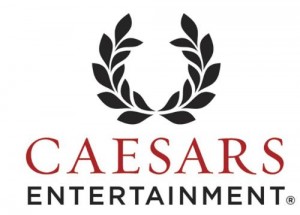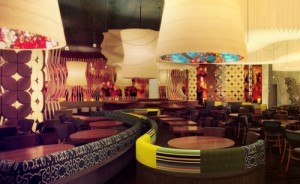 If you have been waiting for the moment to sell your Caesars Entertainment stock and get out unscathed, even making a tidy profit, that moment is now. Actually, it was March 20 this year, when CZR hit an all-time high of $17.54, gently sloping off thereafter. That continued an impressive comeback for a stock that’s been of meager value until early February, when it began manifesting signs of strength. Today’s bulletin was meant to cause a tizzy on Wall Street and it certainly did.
If you have been waiting for the moment to sell your Caesars Entertainment stock and get out unscathed, even making a tidy profit, that moment is now. Actually, it was March 20 this year, when CZR hit an all-time high of $17.54, gently sloping off thereafter. That continued an impressive comeback for a stock that’s been of meager value until early February, when it began manifesting signs of strength. Today’s bulletin was meant to cause a tizzy on Wall Street and it certainly did.
Why the excitement today? In some sleight of hand, Caesars and its owners, Apollo Management and Texas Pacific Group, are lopping off existing assets and treating them not only as new assets but an exciting business opportunity. Yes, YOU can get in on the ground floor of Caesars Growth Partners! (Does this make the other assets, in effect, “Caesars Stagnation Partners”? Just wondering.) Apollo and TPG intend to invest $250 million apiece. None of the assets in CGP can be sold for five years. As a shareholder, you have “the right to acquire for cash at least the same pro rata ownership interest in [Caesars Acquisition Co., aka existing shareholders, headed by CEO Mitch Garber] as such stockholder holds in Caesars,” money that will then be used to purchase voting rights in CGP.
The latter also gets Caesars Interactive, plus as much as $2 billion (the figures are highly volatile) worth of  notes owed by Caesars Entertainment, which will in turn own 57%-77% of CGP (let’s call it “Little Caesar”), depending on how many shares it sells. Big Caesars will render unto Little Caesar Planet Hollywood Resort & Casino for a shockingly low $360 million, along with Caesars 40% share of yet-to-be-built Horseshoe Baltimore, pictured. It will get half the management fees from both casinos, too. Still-overhanging debt of $515.5 million will be sloughed off onto an as-yet-unnamed subsidiary of Little Caesar, thereby purchasing Big Caesars a little more forbearance from Wall Street. Big and Little Caesar will, in essence, consult and pay each other half the management fees of Planet Ho and Horseshoe Baltimore under the pretense of being unrelated companies. Little Caesar also gets first rights to pursue any project Big Caesars deems unattractive.
notes owed by Caesars Entertainment, which will in turn own 57%-77% of CGP (let’s call it “Little Caesar”), depending on how many shares it sells. Big Caesars will render unto Little Caesar Planet Hollywood Resort & Casino for a shockingly low $360 million, along with Caesars 40% share of yet-to-be-built Horseshoe Baltimore, pictured. It will get half the management fees from both casinos, too. Still-overhanging debt of $515.5 million will be sloughed off onto an as-yet-unnamed subsidiary of Little Caesar, thereby purchasing Big Caesars a little more forbearance from Wall Street. Big and Little Caesar will, in essence, consult and pay each other half the management fees of Planet Ho and Horseshoe Baltimore under the pretense of being unrelated companies. Little Caesar also gets first rights to pursue any project Big Caesars deems unattractive.
After three years, Big Caesars has the right to purchase its offspring, via an extremely convoluted series of contingencies. Between five and 8.5 years, Little Caesar is available on the open market. And if no buyer steps up, the assets return to Papa. It’s a weird grab-bag: an existing, brand-name casino, an online-gambling platform and a casino that only exists on paper. Basically, Gary Loveman seems to have taken anything that wasn’t pledged to the banks, thrown it in a sack, flung the sack in a boat and sent it off down the river. Mind you, raising $1.2 billion when you owe 20X that much doesn’t get Loveman out of trouble but it postpones the day of reckoning yet again. The CEO bragged of raising “additional cash liquidity” without incurring more debt, but the money will be frittered away quickly as Caesars chases Toronto one day, Boston the next and Florida the day after that, amid a bleak domestic market. The near-term prospect of online gambling promises some relief but, after it’s boiled down to cash flow, not that much.
But this is what it’s all about: Loveman keeping his job and calling the shots as long as humanly possible, circumstances be damned. Sell now, then consider Motley Fool’s advice and buy back into Little Caesar when it goes solo.
 We took a stroll through Caesars Palace recently and the ongoing series of upgrades, mostly playing off handsome Nobu Tower, are impressive indeed. A ton of outdated, schlock retail is gone. Unfortunately, robotic table games are on the rise. Still, the place looks quite a bit better and it was crowded, as always. What’s being done there makes far more sense than across the street, where “THE QUAD” has been affixed to the front of a building that still looks for all the world like Imperial Palace. You can call it what you want, Mr. L, but it still looks as though Ralph Engelstad never left. Caesars’ Strip strategy appears to be to put all its energy and money into its titular property, while neglecting everything else, save on those rare occasions when you can throw a little capex expenditure their way.
We took a stroll through Caesars Palace recently and the ongoing series of upgrades, mostly playing off handsome Nobu Tower, are impressive indeed. A ton of outdated, schlock retail is gone. Unfortunately, robotic table games are on the rise. Still, the place looks quite a bit better and it was crowded, as always. What’s being done there makes far more sense than across the street, where “THE QUAD” has been affixed to the front of a building that still looks for all the world like Imperial Palace. You can call it what you want, Mr. L, but it still looks as though Ralph Engelstad never left. Caesars’ Strip strategy appears to be to put all its energy and money into its titular property, while neglecting everything else, save on those rare occasions when you can throw a little capex expenditure their way.


When I saw this announcement, I thought of one thing: ENRON! I was a finance/economics dual major who actually worked at Arthur Andersen during the Enron debacle. Essentially, they transferred good-performing assets to funds and had investors line up to invest in them. Bad assets were transferred to other off-balance sheet funds, etc., to hide the losses etc. You get the point. Wall Street celebrated yesterday, but Main Street should take caution. The real estate and financial markets are getting over-heated again driven by these type of “forget the fundamentals and financially engineer” transactions for profits/fees for everyone. It is very alarming how quickly we forget just a few years ago what led to our financial collapse. Mark my words, we are headed in the same direction and this deal is the tip of the iceberg. But TPG and Apollo know what they are doing; right???
My apologies for going negative. I just can not understand how Wall Street is diving deep into this stuff again.
I can’t believe Texas Partners and Apollo Management agreed to the latest Loveman shell game!! Someone in those outfits has to understand that outright asset sales is the only solution to CZR’s mountain of debt, not “repackaging” the properties. How much money is Loveman wasting on lawyers fees associated with all of these shell-game deals that do nothing to combat the company’s real problem? Somebody please put him back on a plane to Cambridge!
[…] little shady but I really don’t understand how this is supposed to work. Stiffs and Georges dissects the venture and it seems like there’s a ball (debt) under a cup and Caesars is doing a magic trick that […]